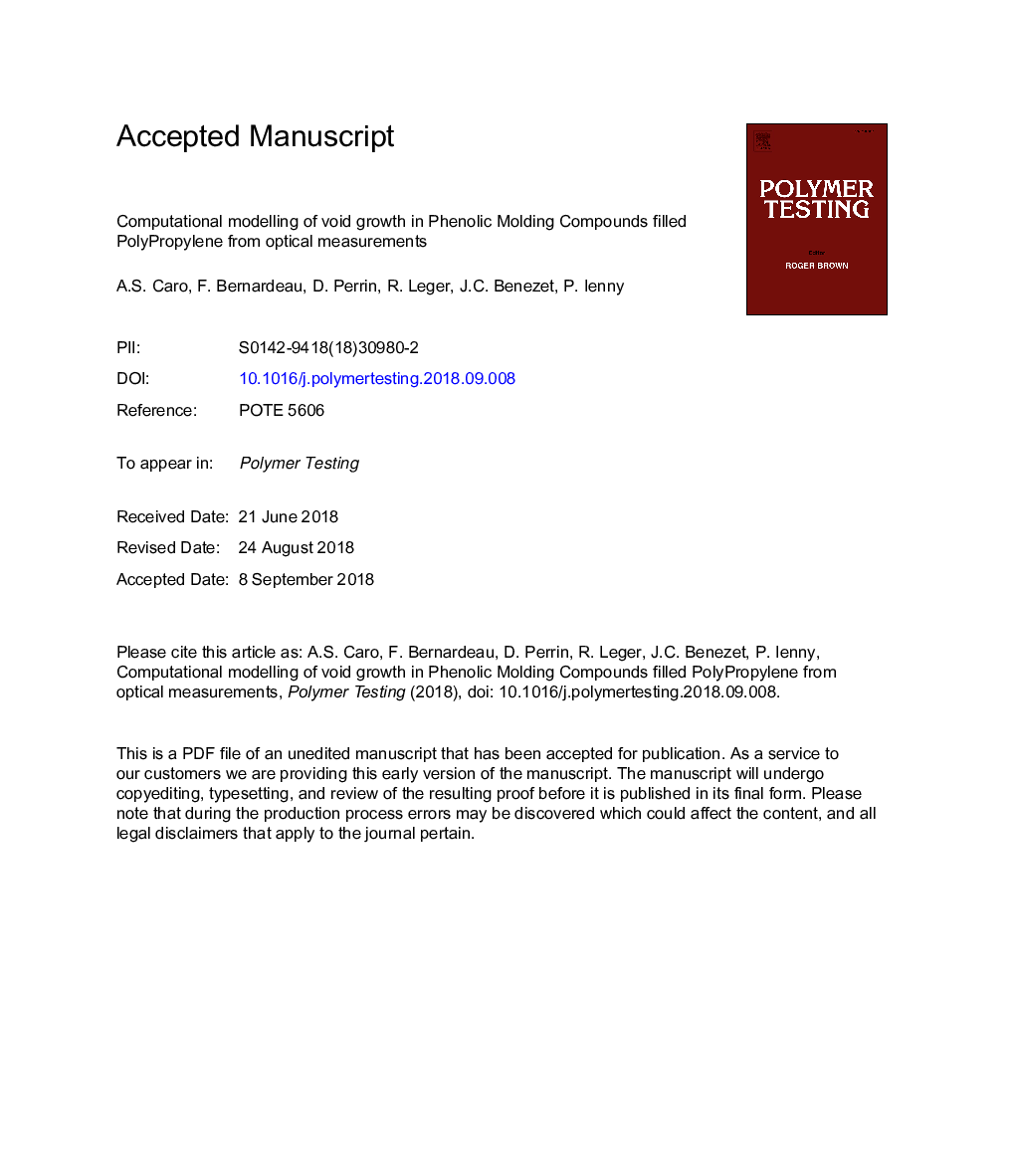| کد مقاله | کد نشریه | سال انتشار | مقاله انگلیسی | نسخه تمام متن |
|---|---|---|---|---|
| 10135288 | 1645658 | 2018 | 22 صفحه PDF | دانلود رایگان |
عنوان انگلیسی مقاله ISI
Computational modelling of void growth in Phenolic Molding Compounds filled PolyPropylene from optical measurements
ترجمه فارسی عنوان
مدل سازی محاسباتی از رشد خالی در پلی اتیلن پلی اتیلن پر شده از ترکیبات فنلی از اندازه گیری های نوری
دانلود مقاله + سفارش ترجمه
دانلود مقاله ISI انگلیسی
رایگان برای ایرانیان
کلمات کلیدی
ترکیبات ریخته گری فنل، خسارت، تغییر حجم، المان محدود،
موضوعات مرتبط
مهندسی و علوم پایه
شیمی
شیمی آلی
چکیده انگلیسی
Phenolic molding compounds (PMC), also known as Bakeliteâ¢, are the first synthetic plastics ever produced. They are still in use today in electrical, household and automotive applications. However, one major drawback of PMC is their lack of recycling option. Indeed, landfilling is still the main route of disposal, which constitutes a serious environmental burden. A new alternative recycling method is the use of comminuted PMC as filler in a thermoplastic matrix, in order to improve its mechanical and thermal properties. Several key parameters of the manufactured composite structure are the fillers size distributions, their loading percentage, and the adhesion at the filler/matrix interface. These parameters are related to mechanical properties of the composites, such as tensile strength. In this work, a polypropylene matrix is filled with 20% by weight of comminuted PMC (d50â¯=â¯24â¯Î¼m) functionalized with 3% by weight of PP-g-MA to improve matrix/fillers compatibility. A FE model was developed from the mechanical behavior of each component. PP matrix and PMC fillers are individually characterized from tensile tests instrumented with photomechanics for the matrix characterization and their behaviors were modelled through a set of numerical parameters (elasto-visco-plasticity with a Gurson criterion behavior for the matrix and damage elasticity for the fillers). Numerical simulations at several strain rates were conducted on representative volume element with various microstructures. Comparison between the determinist model results and the experimental data (strength, volumetric variation) shows that this type of modelling could be a predictive tool in order to design particulate composites with optimized mechanical properties. Hence, it is an adequate way to understand micromechanisms of deformation (damage, cavitation).
ناشر
Database: Elsevier - ScienceDirect (ساینس دایرکت)
Journal: Polymer Testing - Volume 71, October 2018, Pages 209-216
Journal: Polymer Testing - Volume 71, October 2018, Pages 209-216
نویسندگان
A.S. Caro, F. Bernardeau, D. Perrin, R. Leger, J.C. Benezet, P. Ienny,
